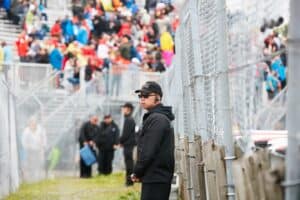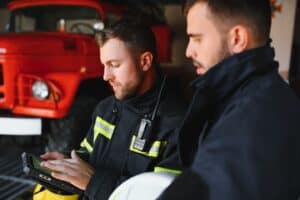Introduction
For police officers, having situational information before arriving at the scene of an incident is crucial for ensuring a swift and effective response. In this blog post, we will explore the benefits of providing officers with real-time situational information, how it enhances their decision-making and operational efficiency, and the role of technology in facilitating this process.
The Importance of Situational Awareness
Situational awareness refers to the ability to perceive, understand, and predict the elements of an environment. For police officers, this means being aware of the current conditions at an incident scene, including potential threats, the presence of victims, and the layout of the area. Enhanced situational awareness allows officers to:
- Make Informed Decisions: With real-time information, officers can assess the situation accurately and decide on the best course of action.
- Reduce Response Times: Knowing the exact location and nature of the incident enables officers to navigate more efficiently and arrive on scene faster.
- Enhance Officer Safety: Awareness of potential threats and hazards helps officers take appropriate precautions, reducing the risk of injury or death.
- Improve Public Safety: Timely and accurate information allows officers to address threats more effectively, protecting the public and reducing the potential for harm.
Benefits of Providing Situational Information
Improved Decision-Making
Access to situational information before arriving on scene allows officers to make better decisions. For example, if an officer knows that a suspect is armed and dangerous, they can plan their approach accordingly, ensuring they are prepared to handle the threat. This reduces the likelihood of surprise and enables officers to respond more effectively.
Faster Response Times
Real-time information about the location and nature of an incident enables officers to navigate more efficiently. Instead of wasting time searching for the exact address or assessing the situation upon arrival, officers can use the information provided to reach the scene quickly and take immediate action.
Enhanced Coordination
When multiple officers are responding to an incident, situational information helps coordinate their efforts. Officers can share updates, track each other’s locations, and ensure that all areas of the incident are covered. This coordinated approach improves the overall efficiency of the response.
Increased Officer Safety
Awareness of potential threats and hazards is critical for officer safety. By providing situational information, officers can take appropriate precautions, such as requesting backup or using protective equipment. This reduces the risk of injury or death and ensures that officers can perform their duties safely.
Better Public Safety
When officers have access to accurate and timely information, they can address threats more effectively, protecting the public and reducing the potential for harm. This is particularly important in situations involving active shooters, armed suspects, or other high-risk scenarios.
The Role of Technology in Enhancing Situational Awareness
Advanced technology plays a crucial role in providing officers with situational information. Here are some key technologies that facilitate this process:
Real-Time Data Sharing
Unified communication platforms like C2 Platforms enable real-time data sharing among officers and dispatchers. This includes live updates on the location of the incident, the presence of suspects or victims, and any other relevant information. Real-time data sharing ensures that officers have the most up-to-date information, enhancing their situational awareness.
GPS and Mapping
GPS technology allows officers to track the location of their colleagues and navigate to the scene efficiently. Interactive maps provide a visual representation of the incident area, highlighting key points of interest and potential hazards. This helps officers plan their approach and coordinate their efforts effectively.
Mobile Applications
Mobile applications enable officers to access situational information on their smartphones or tablets. This ensures that they have the information they need, even while on the move. Mobile apps also facilitate communication and data sharing, allowing officers to stay connected and informed at all times.
Body-Worn Cameras
Body-worn cameras provide a real-time view of the incident, allowing officers to share live video feeds with dispatchers and other responders. This visual information enhances situational awareness and provides a better understanding of the conditions at the scene.
Case Study: Enhanced Situational Awareness in Action
The Benefits of Real-Time Information During a Hostage Situation
In a recent hostage situation, police officers were able to use unified communication tools to access real-time information about the incident. Dispatchers provided live updates on the location of the hostages and the movements of the suspect. This information allowed officers to plan their approach, coordinate their efforts, and ultimately resolve the situation safely and efficiently.
Improved Coordination During a High-Speed Pursuit
During a high-speed pursuit, officers used GPS and mapping technology to track the suspect’s movements and share their locations with each other. This real-time information enabled officers to coordinate their efforts, set up roadblocks, and bring the pursuit to a successful conclusion without endangering the public.
Faster Response Times in Medical Emergencies
In medical emergencies, timely information can be the difference between life and death. EMS teams using unified communication tools were able to receive real-time updates on the condition of patients and the location of ambulances. This allowed them to navigate efficiently, provide timely medical assistance, and improve patient outcomes.
Conclusion
Providing police officers with situational information before arriving at the scene of an incident is crucial for ensuring a swift and effective response. Enhanced situational awareness improves decision-making, reduces response times, enhances coordination, increases officer safety, and protects the public. Advanced technology, including real-time data sharing, GPS and mapping, mobile applications, and body-worn cameras, plays a vital role in facilitating this process.
C2 Platforms is committed to providing first responders with the tools they need to enhance their situational awareness and improve their operational efficiency. By investing in advanced communication and information-sharing technology, agencies can ensure that their officers are better prepared to handle any situation, ultimately saving





